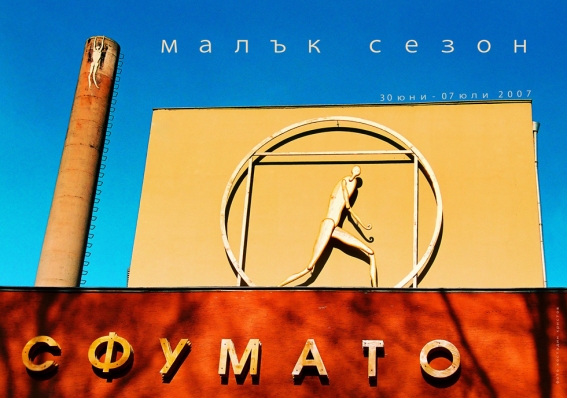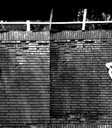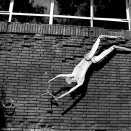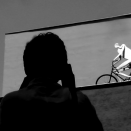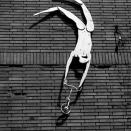Via Ludens I
Installation, Public Art
A project that humanises the façade of a building. The artist is reflected on its surface, on what Hundertwasser describes as the ‘third skin’ of humans.
While urban architecture is typically monotonous and unfitting for man’s body, the artist re-invents an existing façade as a way to break the boring balance of walls. Simplified human figures placed on the façade are animated by human initiative or by the wind via simple mechanisms. Thus, they let the pores of man’s third skin breathe and allow for communication and interaction.
Presented on the façade of Theatre-Laboratory ‘Sfumato’ Sofia, building of former baths.
The cities we inhabit are not made with a human scale in mind.
The concept of a ‘machine for living in’ (Le Corbusier) brings into the city a threatening, monotonous, and repetitive architecture.
It only satisfies a small amount of human necessities.
It is impossible to destroy the faceless architecture that surrounds us. Thus, a completely new landscape has to be created in its place.
What is possible is to create new spaces through minimal interventions and using pre-existing surfaces.
The façade is a part of architecture that is constantly exposed to gazes.
It is also the human’s ‘third skin’ (Hundertwasser).
Together with the natural epidermis and the clothes one wears, the façade is an integral part of the human body.
Through the façade, connections are established: between body and soul, humans and nature, and among ourselves.
‘Via Ludens’ is a project that strives to humanise the façade.
On the ‘Via Ludens’ façade, stylised human figures open up the pores of the human third skin.
They are small openings for communication and exchange.
Through them, architecture begins to breathe again.
These figures introduce the spectator, the visitor or the passer-by in the endless game of movement, which rejects the balance of monotonous walls.
Due to our actions or simply because of the wind, these three-dimensional reliefs come to life; they spin wheels, they are themselves rotating and fascinating in the simplicity of their mechanisms.
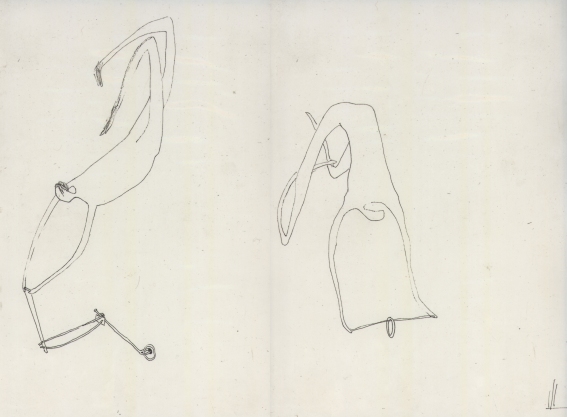
Venelin Shurelov or how the Vitruvian Man came to Sfumato
We owe everything to Giorgio Vasari, who described Leonardo’s technique of air painting with the playful word ‘sfumato’. Already in 1989, I proposed to use this word to name the newly formed Theatre-Laboratory and my proposal was automatically accepted. As years went by, the Theatre-Laboratory Sfumato was pervaded by this airy Vasarian formula and became more and more enigmatic, more eerie and closer to the Invisible. And even more playful! It is precisely this playfulness that was thought by Venko Shurelov to constitute a main feature of the Theatrical. His emblem departs from Leonardo’s classic drawing – his human is framed within a square and a circle. Venko’s human has turned around and started leaving this Procrustean bed. From that moment onwards, Venko’s humans swarmed Sfumato’s façade, they clambered upon it – some on bicycles, some simply flying, stretching recklessly on walls and windowsills, while some of them even shun up the chimney and remained hanging up there in an ecstatical impulse towards the Invisible. ‘The logic of the visible at the service of the invisible’ – I tried to make a motto of Sfumato out of these renowned words by Odilon Redon. In my opinion, Venko Shurelov’s intervention turned this motto into a visible metaphor of the theatrical poetics of the Laboratory.
Ivan Dobchev, 2018
